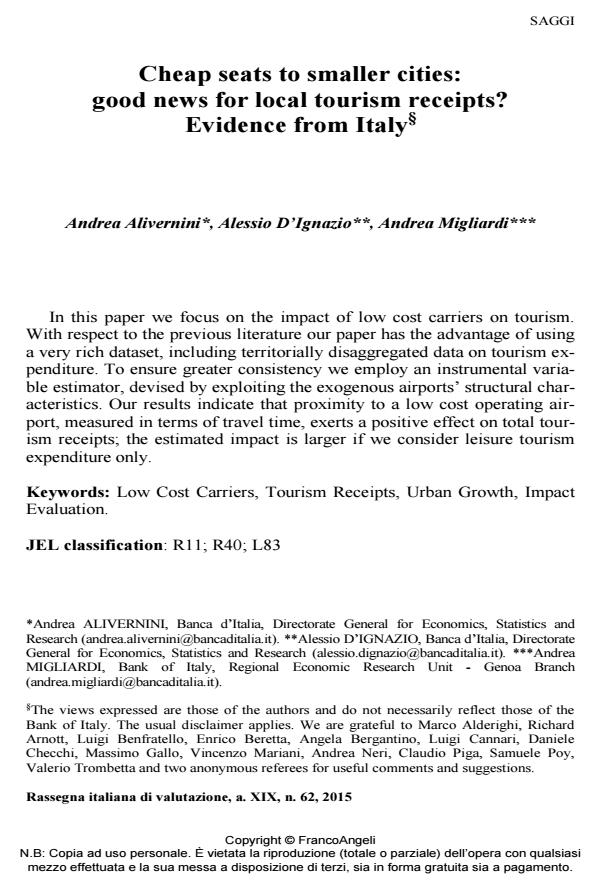Cheap seats to smaller cities: good news for local tourism receipts? Evidence from Italy
Journal title RIV Rassegna Italiana di Valutazione
Author/s Andrea Alivernini, Alessio D'Ignazio, Andrea Migliardi
Publishing Year 2016 Issue 2015/62
Language English Pages 21 P. 9-29 File size 542 KB
DOI 10.3280/RIV2015-062003
DOI is like a bar code for intellectual property: to have more infomation
click here
Below, you can see the article first page
If you want to buy this article in PDF format, you can do it, following the instructions to buy download credits

FrancoAngeli is member of Publishers International Linking Association, Inc (PILA), a not-for-profit association which run the CrossRef service enabling links to and from online scholarly content.
In this paper we focus on the impact of low cost carriers on tourism. With respect to the previous literature our paper has the advantage of using a very rich dataset, including territorially disaggregated data on tourism expenditure. To ensure greater consistency we employ an instrumental variable estimator, devised by exploiting the exogenous airports’ structural characteristics. Our results indicate that proximity to a low cost operating airport, measured in terms of travel time, exerts a positive effect on total tourism receipts; the estimated impact is larger if we consider leisure tourism expenditure only.
Keywords: Low Cost Carriers, Tourism Receipts, Urban Growth, Impact Evaluation.
Jel codes: R11; R40; L83
- LLimpatto di un nuovo aeroporto sul turismo internazionale: il caso di Ragusa (The Impact of a New Airport on International Tourism: The Case of Ragusa (Sicily)) Francesco David, Giuseppe Saporito, in SSRN Electronic Journal /2017
DOI: 10.2139/ssrn.3120489
Andrea Alivernini, Alessio D'Ignazio, Andrea Migliardi, Cheap seats to smaller cities: good news for local tourism receipts? Evidence from Italy in "RIV Rassegna Italiana di Valutazione" 62/2015, pp 9-29, DOI: 10.3280/RIV2015-062003